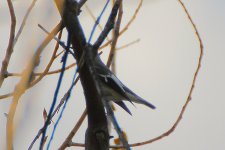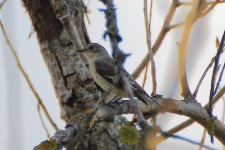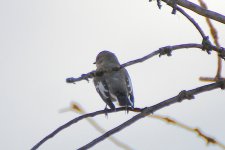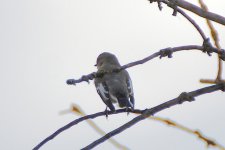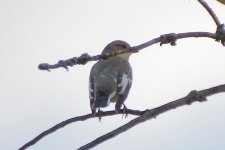Hello there,
When faced with a female-type 'black and white' Ficedula flycatcher in autumn, a necessary first step is to age the bird. In this instance, the shape of the dark tertial centres, with obvious 'steps', is characteristic of retained juvenile feathers, making this bird a 1st-winter. Accordingly, the presence of a median covert wingbar, so indicative of adult female Semicollared, is of no real consequence here, as Pied, Collared and Semicollared can all show median covert wingbars in this plumage. In my experience, it isn't too rare in 1st-w Pieds, for example. The size of the patch at the primary bases, and the extent of the patch, doesn't exclude Collared, in theory at least, but it seems to fall outside of the range of identifiable Collared and well within normal variation shown by Pied. That said, many 1st-winter birds are very tricky, and perhaps even unsafe to identify with certainty, but I have certainly seen images of 1st-winter Collareds with larger patches than shown by this bird (have only seen spring Collared, males and females, so I admit my experience of them in 1st-w plumage is limited to research in field guides and from pics in books and online). So, I'd call this a probable 1st-w Pied Flycatcher with the proviso that, without genetic data and/or calls being recorded, an element of doubt may well exist.
Regards,
Harry




